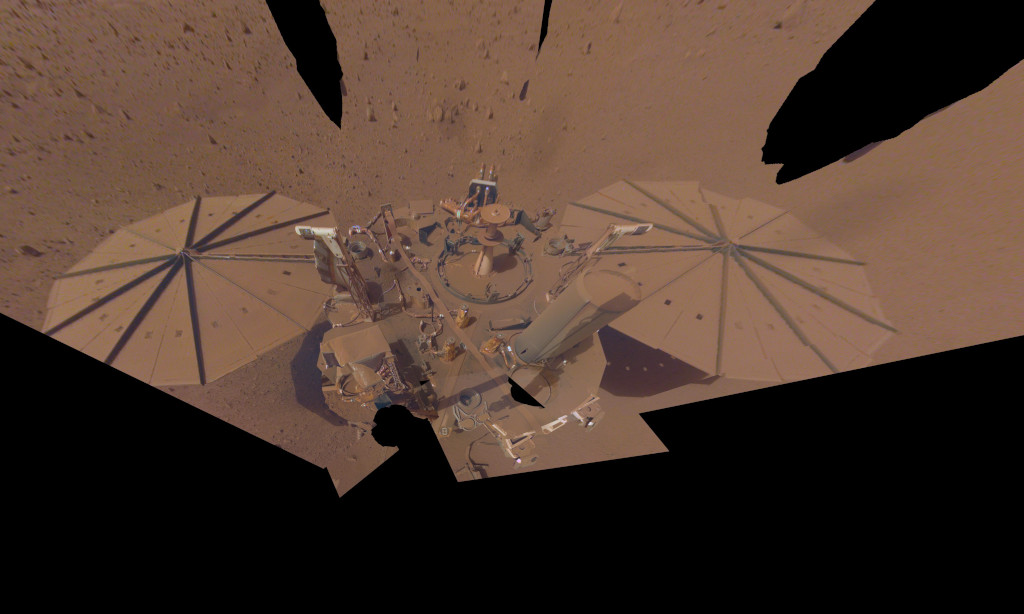Nombre total de pages vues
06/11/2022
MACROPHOTOGRAPHIE - Insectes - Une mouche assez peu commune
05/11/2022
MICROPHOTOGRAPHIE - De petits monstres sous vitamine C

ASTRONOMY - Lunar Eclipse at the South Pole
2022 November 5
Image Credit & Copyright: Aman Chokshi
Explanation: Last May 16 the Moon slid through Earth's shadow, completely immersed in the planet's dark umbra for about 1 hour and 25 minutes during a total lunar eclipse. In this composited timelapse view, the partial and total phases of the eclipse were captured as the Moon tracked above the horizon from Amundsen-Scott South Pole Station. There it shared a cold and starry south polar night with a surging display of the aurora australis and central Milky Way. In the foreground are the BICEP (right) and South Pole telescopes at the southernmost station's Dark Sector Laboratory. But while polar skies can be spectacular, you won't want to go to the South Pole to view the total lunar eclipse coming up on November 8. Instead, that eclipse can be seen from locations in Asia, Australia, the Pacific, the Americas and Northern Europe. It will be your last chance to watch a total lunar eclipse until 2025.
04/11/2022
ASTRONOMY - InSight's Final Selfie
2022 November 4
Image Credit: NASA, JPL-Caltech, Mars InSight
Explanation: The Mars InSight lander returned its first image from the Red Planet's flat, equatorial Elysium Planitia after a successful touchdown on November 26, 2018. The history making mission to explore the martian Interior using Seismic investigations, geodesy, and heat transport has been operating for over 1,400 martian days or sols. In that time the InSight mission has detected more than 1,300 marsquakes and recorded data from Mars-shaking meteoroid impacts, observing how the seismic waves travel to provide a glimpse inside Mars. Analyzing the archive of data collected is expected to yield discoveries for decades. But InSight's final operational sol is likely not far off. The reason is evident in this selfie recorded earlier this year showing its deck and large, 2-meter-wide solar panels covered with dust. Kicked up by martian winds the dust continues to accumulate and drastically reduce the power that can be generated by InSight's solar panels.
03/11/2022
MICROPHOTOGRAPHIE - De l'acide citrique et un décalcifiant pour un bijou à la mer
ASTRONOMY - M33: The Triangulum Galaxy
2022 November 3
Image Credit & Copyright: Processing - Robert Gendler
Data - Hubble Legacy Archive, KPNO, NOIRLab, NSF, Aura, Amateur Sources
Explanation: The small, northern constellation Triangulum harbors this magnificent face-on spiral galaxy, M33. Its popular names include the Pinwheel Galaxy or just the Triangulum Galaxy. M33 is over 50,000 light-years in diameter, third largest in the Local Group of galaxies after the Andromeda Galaxy (M31), and our own Milky Way. About 3 million light-years from the Milky Way, M33 is itself thought to be a satellite of the Andromeda Galaxy and astronomers in these two galaxies would likely have spectacular views of each other's grand spiral star systems. As for the view from the Milky Way, this sharp image combines data from telescopes on and around planet Earth to show off M33's blue star clusters and pinkish star forming regions along the galaxy's loosely wound spiral arms. In fact, the cavernous NGC 604 is the brightest star forming region, seen here at about the 1 o'clock position from the galaxy center. Like M31, M33's population of well-measured variable stars have helped make this nearby spiral a cosmic yardstick for establishing the distance scale of the Universe.
02/11/2022
SANTE/MEDECINE - Un remède à base de banane contre les insomnies et la dépression

AVIATION IMAGINEE - D'immenses avions pour des vacances au pôle Nord
ASTRONOMY - A Partial Eclipse of an Active Sun
2022 November 2
Video Credit: Ralf Burkart; h/t Maciej Libert (AG)
Explanation: Watch for three things in this unusual eclipse video. First, watch for a big dark circle to approach from the right to block out more and more of the Sun. This dark circle is the Moon, and the video was made primarily to capture this partial solar eclipse last week. Next, watch a large solar prominence hover and shimmer over the Sun's edge. A close look will show that part of it is actually falling back to the Sun. The prominence is made of hot plasma that is temporarily held aloft by the Sun's changing magnetic field. Finally, watch the Sun's edge waver. What is wavering is a dynamic carpet of hot gas tubes rising and falling through the Sun's chromosphere -- tubes known as spicules. The entire 4-second time-lapse video covers a time of about ten minutes, although the Sun itself is expected to last another 5 billion years.
01/11/2022
ASTRONOMY - Night on a Spooky Planet
Image Credit & Copyright: Stéphane Vetter (Nuits sacrées)
Explanation: What spooky planet is this? Planet Earth of course, on a dark and stormy night in 2013 at Hverir, a geothermally active area along the volcanic landscape in northeastern Iceland. Triggered by solar activity, geomagnetic storms produced the auroral display in the starry night sky. The ghostly towers of steam and gas are venting from fumaroles and danced against the eerie greenish light. For now, auroral apparitions are increasing as our Sun approaches a maximum in its 11 year solar activity cycle. And pretty soon, ghostly shapes may dance in your neighborhood too.
ASTRONOMY - A Solstice Sun Tattoo
025 December 20 A Solstice Sun Tattoo Image Credit & Copyright : Marcella Pace Explanation: The word solstice is from the Latin fo...

-
2022 September 26 All the Water on Planet Earth Illustration Credit: Jack Cook, Adam Nieman, Woods Hole Oceanographic Institution ; Data ...
-
2025 May 11 The Surface of Venus from Venera 14 Image Credit: Soviet Planetary Exploration Program , Venera 14 ; Processing & Copyri...






